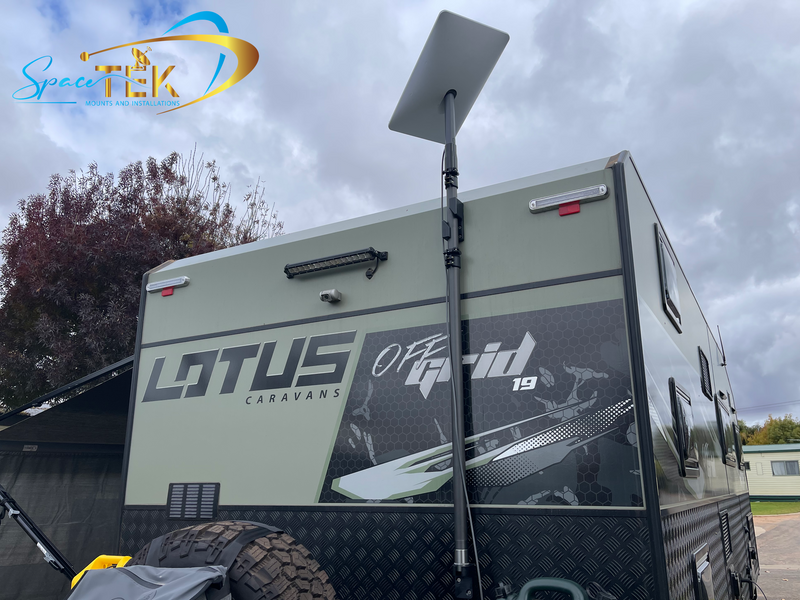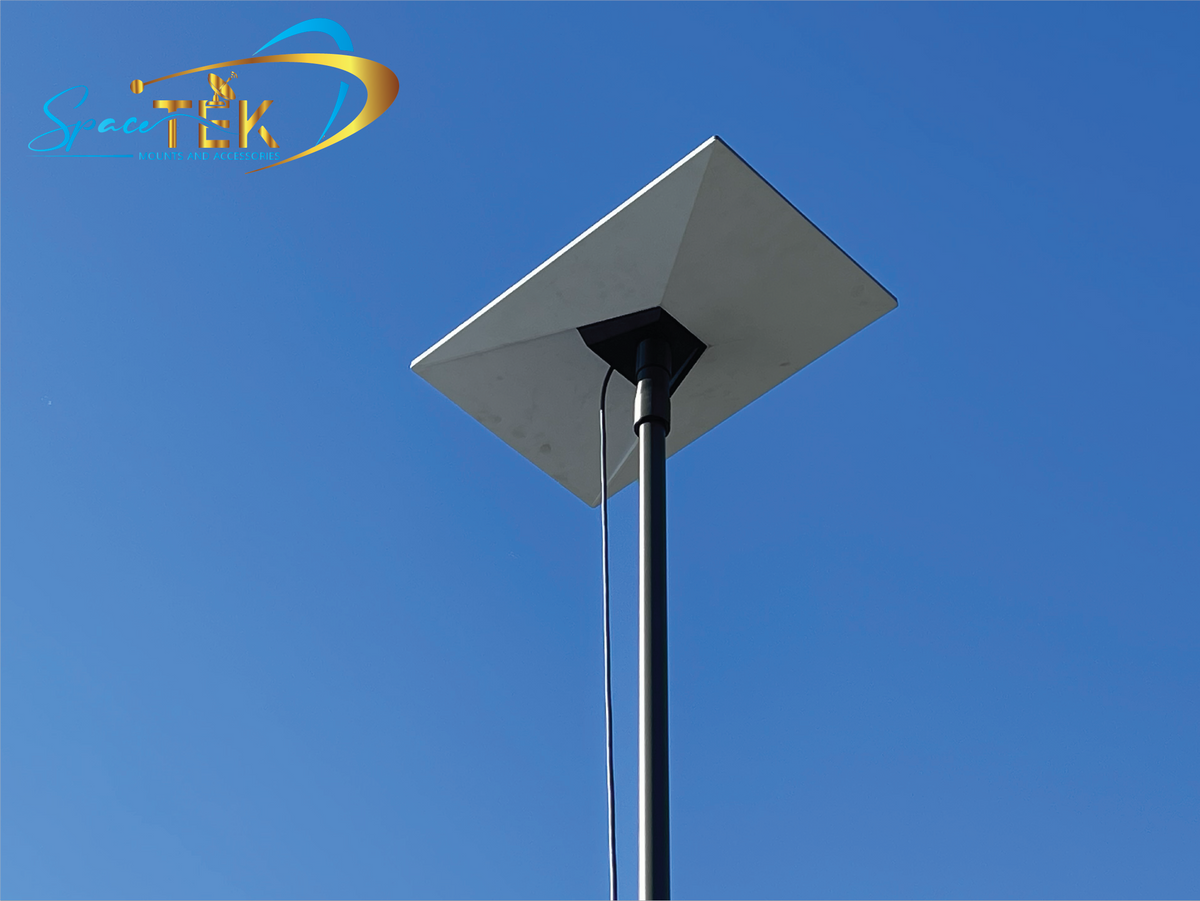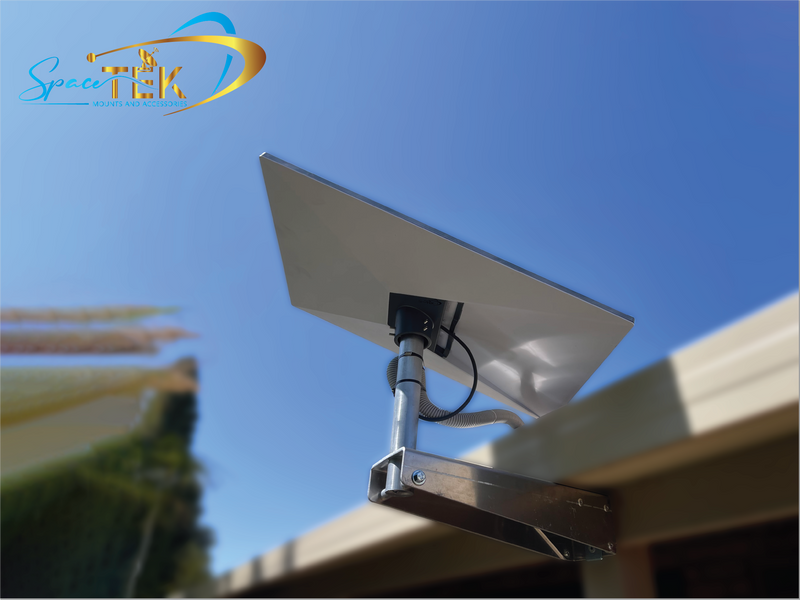Connecting Beyond Boundaries: Starlink for Mobile Homes
Starlink for mobile homes provides reliable satellite internet access for RVs, caravans, and off-grid living with download speeds of 50-250 Mbps and latency of 20-40ms. The service offers multiple hardware options (Standard, Mini, Flat High Performance) and flexible service plans (Roam 50GB, Roam Unlimited, Global Priority) designed specifically for mobile users.
- Hardware Cost: $349-$599 for Standard/Mini dishes, $1,499 for Flat High Performance
- Monthly Plans: $50 for 50GB, $165 for Unlimited data
- Power Requirements: 25-100W depending on dish model
- Setup Time: Under 15 minutes with auto-aiming capability
For mobile home owners seeking reliable internet on the go, Starlink offers a breakthrough solution that works almost anywhere in Australia with a clear view of the sky. Unlike traditional satellite services with high latency, Starlink's low-Earth orbit constellation delivers broadband-like speeds and responsiveness that supports video calls, streaming, and remote work.
Setting up Starlink for your mobile home is surprisingly simple: just place the dish with an unobstructed view of the sky, connect power, and the system automatically finds satellites. The Starlink app helps identify the ideal mounting location free from obstructions like trees or buildings.
I'm Aaron Wroblewski, founder of SpaceTek Australia with over 25 years of experience in remote communications and satellite systems, specialising in creating rugged Starlink for mobile homes mounting solutions specifically designed for Australian conditions and vehicles.
Why Starlink Shines for Mobile and Remote Living
What makes Starlink for mobile homes truly isn't just the internet access—it's how the technology fundamentally works. Unlike traditional satellite systems floating 35,000 km above Earth, Starlink's constellation orbits at just 550 km from the surface. This seemingly simple difference changes everything for mobile users.
Think of it this way: if traditional satellite internet is like shouting to someone on a mountain 35 km away (and waiting for their reply), Starlink is like having a conversation with someone just down the street. This proximity creates two game-changing benefits:
Lower latency that feels like home broadband (20-40 milliseconds) instead of the frustrating half-second delays of old satellite systems, making video calls and online gaming actually enjoyable.
Higher speeds that typically range from 50-250 Mbps for downloads—plenty for streaming, working remotely, or uploading those stunning outback photos.
As we move through 2025, the Starlink constellation continues growing, with over 4,000 satellites now orbiting Earth. You can actually see this impressive network for yourself at satellitemap.space, where the growing coverage becomes visually apparent. Each new launch means better coverage and more consistent speeds, especially for those of us exploring Australia's more remote corners.
Starlink for Remote Australia
For those of us who love exploring Australia's vast wilderness in our mobile homes, Starlink for mobile homes has been nothing short of life-changing. Before Starlink, venturing beyond mobile coverage meant accepting digital isolation. Now, the service blankets virtually the entire continent, including:
The red heart of the outback where mobile towers have never reached. Those pristine coastal spots where the fishing is perfect but the phone signal isn't. National parks and wilderness areas where you can now work remotely while surrounded by nature. Even the most isolated desert regions where traditional connectivity was never an option.
What makes the Roam service plans particularly brilliant for Australian travellers is their simplicity—no need to constantly update your service address as you journey. Simply pack your dish, find a spot with clear sky visibility, and within minutes, you're reconnected to the world, whether you're watching the sunset at Uluru or camped along the Great Ocean Road.
The Australian climate throws everything at us—scorching heat, tropical downpours, and sometimes even snow. Thankfully, Starlink dishes are built tough. They'll keep working through heavy rain (though very heavy downpours might temporarily slow things down), withstand gale-force winds, and even handle our blistering summer heat (though in extreme temperatures, you might notice some thermal throttling). The dishes even have built-in snow-melting capabilities for those exploring the Snowy Mountains in winter.
For grey nomads and triprs crossing state borders or even heading internationally, Starlink for mobile homes offers seamless transitions. The standard Roam service works throughout Australia without requiring address changes, while the Global Priority plans enable international travel with your system—perfect for those Tasmania-to-New Zealand trips or Southeast Asian trips.
Starlink for Mobile Homes: Hardware Choices and Setup Hacks
Setting up Starlink for mobile homes is a bit like choosing the right camping gear - you need the right equipment for your specific trip. As we roll into 2025, Starlink offers several dish options that cater to different mobile lifestyles, whether you're in a compact campervan or a luxurious motorhome.
Choosing the Best Dish for Starlink for mobile homes
The Standard Dish (Gen 3) is like the trusty all-rounder in Starlink's lineup. Priced at $499 (down from $599), this 2.9 kg dish draws between 75-100W of power and offers a 110° field of view. It's perfect for larger RVs and caravans where power isn't a major concern. I particularly love its manual aiming capability with the detachable kickstand - makes setup a breeze when you're parked in a new spot.
The Starlink Mini has quickly become the darling of the van life community. At $599 (though often on sale for $499), this ultra-portable 1.1 kg wonder consumes just 25W on average - a game-changer for those of us running on limited solar and battery capacity. The Mini's dramatically lower power consumption means you can stay connected without draining your batteries, making it ideal for smaller vans and lightweight setups. It literally fits in a backpack!
For those who need business-grade connectivity or plan to use internet while in motion, the Flat High Performance dish is your premium option. At $1,499, it's a significant investment, but the wider 140° field of view and ability to work at speeds up to 160 km/h make it worth considering. With no moving parts and the ability to withstand 174 mph winds, it's built for extreme conditions and permanent installations.
For most Aussie nomads, the Standard or Mini dish offers the sweet spot between performance and practicality. If power is tight (as it often is when boondocking), the Mini's lower consumption is hard to beat.
Powering Starlink for mobile homes Off-Grid
Power management is where many mobile setups struggle, especially when you're off-grid in the beautiful Australian outback. This is where our SpaceTek StarPower V2 DC power supply becomes a must-have companion for your Starlink for mobile homes setup.
The StarPower V2 12V/24V DC Power Supply is a proper game-changer because it eliminates the inefficient AC inverter conversion - saving you approximately 37% power right off the bat. It connects directly to your 12V/24V DC sources (with an 11-36V DC input range) and works with Gen 1, 2, and 3 Standard terminals. We've included multiple connector options like Anderson plugs and 2.5mm DC jacks, plus an unregulated DC pass-through for powering your router.
When planning your solar setup, remember these power requirements:
- Standard dish: 75-100W × hours of use + 25-30W for router
- Mini dish: 25-40W × hours of use + 25-30W for router
For all-day use of a Standard dish, I typically recommend around 400W of solar panels (accounting for those cloudy days and efficiency losses) paired with a 200Ah lithium battery bank (or 400Ah lead-acid if that's what you've got). Add the StarPower V2 DC power supply, and you're sorted for reliable power without wasteful conversion losses.
The Mini dish is a proper power miser - potentially halving your power requirements compared to the Standard dish. For smaller vans with limited roof space for solar, this difference can be the deciding factor.
Quick-Start Setup for Starlink for mobile homes
Getting your Starlink for mobile homes up and running is refreshingly simple - even for those who aren't particularly tech-savvy. Here's my tried-and-true process:
First, download the Starlink app on your phone or tablet before heading off-grid - it's available for both iOS and Android. The app includes a brilliant obstruction finder tool that uses your camera to identify potential signal blockers like trees or buildings.
Position your dish with a clear view of the sky, particularly with a good northward aspect if you're in Australia. Connect power to both the dish and router, then give it about 3-5 minutes to automatically find and connect to satellites overhead. Once it's connected, simply join the Starlink Wi-Fi network and complete the setup through the app.
For the Standard dish, you'll use the app to guide your manual aiming with the detachable kickstand. It'll let you know when you've found that sweet spot for optimal connectivity.
Pro tip from years on the road: Always manually "stow" your dish via the app before packing up and moving your vehicle. This positions the dish safely for transport and protects those sensitive motors in the actuated models. I learned this the hard way when I once forgot and heard some concerning noises from my dish as we bounced down a corrugated outback road!
With these hardware choices and setup tips, you'll be well on your way to enjoying reliable internet connectivity wherever your mobile home trips take you across Australia's vast and beautiful landscape.
Optimising Performance on the Move in 2025
Getting the absolute best from your Starlink for mobile homes is a bit like finding the perfect campsite – it takes a little know-how and the right conditions. In 2025, with more satellites in orbit than ever before, your connection can be brilliant... if you know these key tricks.
The golden rule? Clear sky access. Nothing matters more than your dish having an unobstructed view upward. Think of your Starlink dish as a thirsty plant that needs sunlight – except it's hungry for satellite signals! Depending on your dish model, you'll need between 110-140° of open sky to catch those satellites as they zip overhead at 27,000 km/h.
Those sneaky obstructions that can ruin your Netflix marathon include the usual suspects: dense tree canopies, tall buildings, mountain ridges, power lines, and even your own caravan's roof-mounted air conditioner or solar panels. I've seen many a frustrated RVer wondering why their connection keeps dropping, only to find their dish is partially blocked by their own solar setup!
Thankfully, the Starlink app includes a brilliant obstruction finder tool that uses your phone's camera to visualize exactly where potential problems might be. It's like having x-ray vision for satellite signals! Use this clever tool before permanently mounting your dish or when selecting your next overnight spot.
Want to squeeze every bit of performance from your system? Try these proven tricks:
Dodge the digital rush hour by avoiding peak usage times in popular camping areas. Just like highway traffic, internet congestion typically peaks between 7-10 PM when everyone's streaming their favourite shows.
Enable sleep scheduling through the app to conserve precious power when you're not using the system. This is particularly valuable for boondockers and off-grid enthusiasts watching their battery levels.
Keep your firmware fresh by leaving your system powered overnight occasionally. Those automatic updates often bring performance improvements and new features.
Consider upgrading to priority data plans if you're working remotely in busy areas. The extra cost can be worth it for those important Zoom calls.
Give your equipment room to breathe by ensuring proper ventilation around both the dish and router. In Australia's scorching summer heat, thermal throttling can seriously impact performance if your gear can't cool properly.
Advanced Tips for Starlink for mobile homes
For those who want to take their Starlink for mobile homes experience to the next level, a few advanced strategies can make a world of difference.
Dual-WAN bonding sounds technical, but it's actually quite brilliant. Using a compatible travel router (like certain GL.iNet models), you can combine your Starlink connection with a mobile data connection. This creates a seamless internet experience with automatic failover if either connection hiccups, load balancing to spread your data usage, and even smart routing that sends different types of traffic over the most appropriate connection. I've personally used this setup to keep video calls on Starlink while handling background downloads via cellular – works a treat!
Being clever with your plan management can also save you serious money. Starlink's flexible service plans are perfect for the seasonal traveller. Heading home for a few months? Simply pause your service and resume it when you hit the road again. Need reliable connectivity for an important remote work week? Temporarily upgrade to Priority data before switching back to standard afterward. The 50GB plan is brilliant value for occasional users or those who pair it with cellular data.
Network optimisation within your mobile home makes a huge difference too. Position the router centrally for best coverage, take advantage of the Gen 3 router's Wi-Fi 6 capabilities for handling multiple devices, and consider adding a mesh network extension for larger caravans or motorhomes where the signal might not reach all areas.
With these optimisations in place, your Starlink for mobile homes system will deliver the reliable, high-speed connectivity that makes remote work, streaming, and staying connected possible – no matter how far off the beaten track your trips take you.
Must-Have Mounts and Accessories for Mobile Homes
Finding the perfect mounting solution can transform your Starlink for mobile homes experience from frustrating to fantastic. When you're constantly on the move, you need gear that's as adaptable and resilient as your lifestyle. That's exactly why we've developed specialized mounts at SpaceTek Australia that are purpose-built for Australian mobile homes and our unique conditions.
Whether you're parked at a coastal caravan park battling salt spray or deep in the outback facing dust storms and scorching heat, having the right accessories makes all the difference between a stable connection and constant frustration.
Portable Mount Solutions
Our Starlink RV-Compatible Suction Cap Mount has become a favorite among mobile home enthusiasts across Australia. It's brilliantly simple yet incredibly effective – attaching securely to any smooth composite wall on your caravan, motorhome or RV. What makes this mount special is its versatility – you can position it wherever you need to find that perfect view of the sky.
The adjustable safety hook bracket is what sets our design apart, carrying the weight of both your terminal and the mount itself. This means the suction caps only need to keep everything snug against the wall, not support the entire weight. For best results, we recommend cleaning both the surface and suction caps with a damp cloth before each use, and using a spray bottle with soapy water to improve adhesion, especially on hot days when expanding air might reduce suction.
For those needing even more flexibility, our Carbon Fibre Telescopic RV Mount is a game-changer. Made from premium carbon fibre, it weighs a mere 1.5 kg (3.3 lbs) yet extends from 1 meter all the way up to 3 meters in height. This lightweight champion features top and bottom brackets for secure attachment and is perfect for clearing obstacles like tree canopies or nearby structures that might block your signal.
The beauty of these portable solutions is that they give you complete freedom to optimize your dish position at each new location, rather than being locked into a permanent mount that might work perfectly in one spot but terribly in another.
Roof and Wall Fixed Mounts
For those preferring a more permanent solution, our Starlink Flat High Performance Pole Adapter - Advanced offers impressive stability and functionality. This cleverly designed adapter attaches directly to Flat High Performance terminals with quick-release thumb screws for easy removal when needed. The six grub screws secure firmly to poles up to 51mm (2 inch) in diameter, giving you confidence even in high winds.
One thoughtful feature we've incorporated is the 30-degree pitch design, which naturally helps the terminal's surface shed debris, rainwater, and those inevitable bird droppings that can accumulate over time.
All our mounts are engineered specifically with Australian conditions in mind. We use rust-resistant materials that stand up to coastal environments, UV-stabilised components that won't degrade under our harsh sun, and designs tested to withstand the unpredictable wind conditions of the outback. And we've made sure installation is straightforward using standard tools most travelers already have on hand.
Power & Cable Upgrades
Proper power management and cable protection are often overlooked aspects of a Starlink for mobile homes setup, but they're absolutely crucial for long-term reliability.
Our StarPower V2 12V/24V DC Power Supply has become essential equipment for serious mobile Starlink users. This compact powerhouse (measuring just 160 × 100 × 60mm including mounting tabs) offers a wide input voltage range from 11-36V DC, allowing you to draw power directly from your RV's battery system. By eliminating inefficient AC conversion, you'll save significant power – a precious commodity when you're off-grid.
The StarPower V2 comes with multiple connector options for flexible installation and includes an unregulated DC pass-through for powering your router. It's compatible with Gen 1, 2, and 3 Standard terminals, making it versatile across different Starlink hardware generations.
To complete your mobile setup, we recommend investing in proper cable protection:
- Weatherproof cable sleeves that resist UV damage and moisture
- Heavy-duty cable ties rated specifically for outdoor use
- Careful cable routing to prevent water ingress
- Proper strain relief at all connection points
These seemingly small details can make the difference between a system that lasts for years and one that fails when you need it most – typically in the most remote location possible!
With the right mounting solutions and accessories from SpaceTek Australia, your Starlink for mobile homes setup will be ready to deliver reliable connectivity wherever your trips take you across our vast and varied continent.
Frequently Asked Questions about Starlink for Mobile Homes
Does Starlink work while I'm driving my motorhome?
One of the most common questions we hear from mobile home owners is about connectivity while on the move. The answer depends on which dish you're using.
If you have a Standard or Mini dish, they'll technically work at very slow speeds (around 16 km/h), but this isn't officially supported by Starlink. Using these dishes while moving faster could potentially violate your service terms, and performance will be spotty at best.
For true on-the-go connectivity, the Flat High Performance dish is what you need. It's specifically certified for in-motion use at speeds up to 160 km/h when paired with the appropriate service plan. The flat design with no moving parts makes it ideal for highway travel.
That said, most of our customers find they don't actually need internet while driving. The real bandwidth-heavy activities like video calls, streaming, and downloading large files typically happen when you're parked up at your destination. For many travellers, setting up your dish upon arrival works perfectly well for their needs.
How much power does the dish really use on 12 V?
Power consumption is crucial when you're living off-grid, and real-world usage varies significantly depending on your setup:
For the Standard dish, you'll see about 44W average power draw (ranging between 35-60W) when powered directly via our StarPower V2 DC supply. If you're using an AC inverter instead, that jumps to 60-80W due to conversion losses. When the snow melt feature activates, power consumption can spike up to 100W.
The Mini dish is much more efficient, drawing only about 20W on average with direct 12V DC power, or 25-40W through an inverter. Even with snow melt mode active, it typically stays under 60W.
For practical battery planning, I recommend budgeting about 1.2-1.8 kWh per day for continuous Standard dish use, or roughly 0.5-0.9 kWh for the Mini. In real terms, that's about 100Ah from a 12V lithium battery (or 200Ah lead-acid) for a full day of Standard dish use. The Mini dish needs only about half that capacity – a significant advantage for smaller mobile setups with limited power resources.
Can I pause my Roam plan when the van is parked at home?
Absolutely! This is one of the most budget-friendly features of Starlink for mobile homes and a huge advantage for seasonal travellers.
You can pause your Starlink service for your mobile home, but keep in mind how the billing works. When you pause, the change takes effect at the start of your next billing cycle—not immediately. You pay for a full month up front, and any unused days aren’t refunded. If you unpause mid-cycle, you’ll pay a prorated amount for the rest of that billing period. Everything is tied to your billing date, so plan your pauses and reactivations accordingly.
Starlink Accessories Built for Remote Australia
Living off-grid in the Australian outback presents unique challenges for satellite internet users. At SpaceTek Australia, we've spent years developing Starlink for mobile homes accessories that can handle everything our sunburnt country throws at them – from scorching desert heat to coastal salt spray.
When you're 500km from the nearest town, you can't afford equipment failure. That's why our mounting solutions are built specifically for Australian conditions, with materials that withstand extreme heat, resist UV degradation, and stand up to the fine red dust that seems to get into everything on those outback tracks.
Our RV Suction Cap Mount has become a favourite among mobile home owners who want flexibility without drilling holes. This clever mount attaches securely to any smooth composite surface on your caravan or motorhome, letting you position your dish for optimal signal without permanent installation. The adjustable safety hook bracket carries the weight while the suction caps hold tight against your vehicle's wall – perfect for those who need to reposition as they travel.
For those needing more height to clear obstacles, our Carbon Fibre Telescopic RV Mount is an engineering marvel. Weighing just 1.5kg but extending from 1 to 3 metres, this premium mount helps you rise above trees and structures that might block your signal. The carbon fibre construction means it's both incredibly strong and light enough to handle easily – essential when you're setting up camp after a long day on the road.
Power management is another critical challenge for remote travellers. Our StarPower V2 12V/24V DC Power Supply solves this beautifully, connecting your Starlink for mobile homes system directly to your vehicle's 12V or 24V battery system. By eliminating inefficient AC power conversion, it reduces power consumption by approximately 37% – a game-changer when you're relying on solar panels and limited battery capacity in remote locations.
For those using the Flat High Performance dish, our Flat High Performance Pole Adapter features a clever 30-degree pitch design that naturally sheds water, dust, and debris during rain – especially important in areas prone to dust storms or heavy tropical downpours.
All our hardware uses marine-grade stainless steel fasteners and corrosion-resistant finishes because we understand that standard hardware simply doesn't cut it in coastal environments where salt air can destroy lesser materials within months.
When you're exploring remote Australia, reliable internet isn't just about checking emails or streaming movies – it can be essential for safety, weather updates, and staying connected with loved ones. Our mounting solutions ensure your Starlink for mobile homes system stays securely in place and optimally positioned, whether you're in the Kimberley, crossing the Nullarbor, or camping along the Great Ocean Road.
The combination of Starlink's satellite technology and SpaceTek Australia's purpose-built mounting solutions creates the ultimate connectivity package for mobile homes across Australia—bringing high-speed internet to places where it was never possible before.
Visit SpaceTek Australia to explore our complete range of Starlink for mobile homes accessories and find the perfect solution for your mobile setup. Because when you're going remote, your internet connection should be the least of your worries.




Leave a comment
This site is protected by hCaptcha and the hCaptcha Privacy Policy and Terms of Service apply.